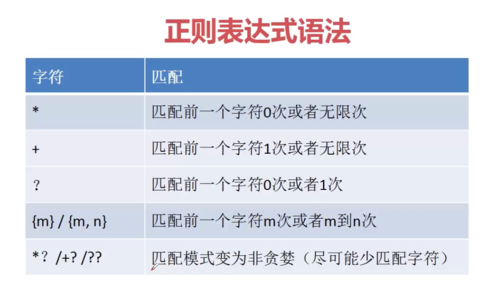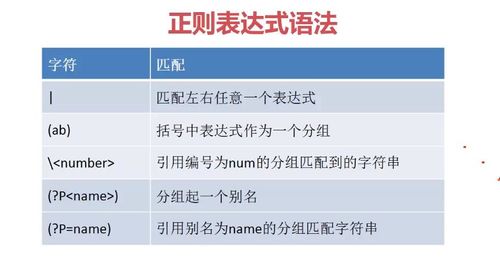-
正则表达式语法查看全部
-
正则表达式语法
查看全部 -
正则表达式基本语法
查看全部 -
import re:python正则表达式模块
查看全部 -
groups的方法是获取某一个组,在正则表达式中用小括号分组。
默认参数0
查看全部 -
字符串之前加r(如r'imooc')可以理解做raw(比如raw_input() )
查看全部 -
切片操作同样可以针对字符串
for *** in f.files的含义是从files中取出每一行作为字符串***的值
查看全部 -
 正则表达式规则查看全部
正则表达式规则查看全部 -
import re #导入re模块
生成pattern对象:pa = re.compile(r'imooc') #匹配的字符
生成match对象:ma = pa.match('imooc.com') #被匹配的字符
ma.group() ==>imooc #返回匹配的字符
ma.span() ==>(0,5) #被匹配字符串所在索引位置
ma.string() ==>'imooc.com' #返回被匹配字符串
查看全部 -
注意:
匹配的关键字最好是使用“原字符串”,若不是需要注意转意的使用;
对于大量需要使用1个代码匹配时,尽量避开直接使用re.match(关键字,被匹配串)这种方法,
查看全部 -
search查找第一个
findall查找所有
查看全部 -
 查看全部
查看全部 -
 查看全部
查看全部 -
import re
str1 = "asdalllllllll"
#创建正则,即匹配规则,r指的是原字符串,返回的是pattern 对象
pa = re.compile(r"asd")
#使用pattern对象的match()方法,返回none或一个match对象
ma = pa.match(str1)
#用match对对象的group()方法,返回匹配到的字符串,或者元组
match对象有多种方法
print(ma.group())
查看全部 -
# 调入正则表达式包re
import re
# 创建字符串
str1 = 'imooc lib'
# 生成规则
change = re.compile(r'imooc')
# 查看规则类型
print(type(change))
# 匹配目标
str1_match = change.match(str1)
# 保存目标
receive_str1_match = str1_match.group()
# 打印目标
print (receive_str1_match)查看全部
举报










